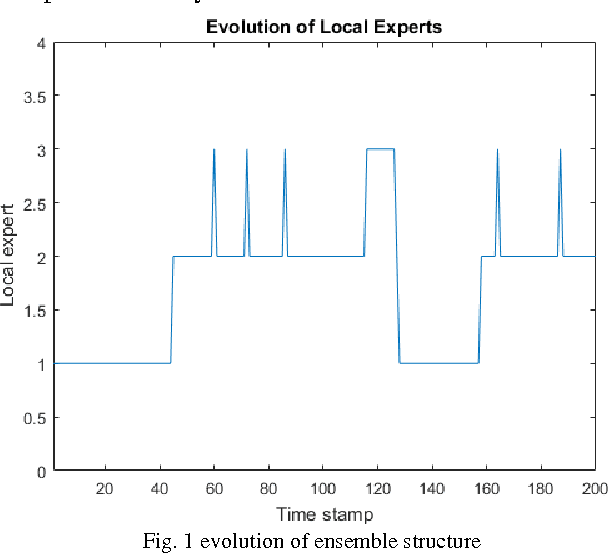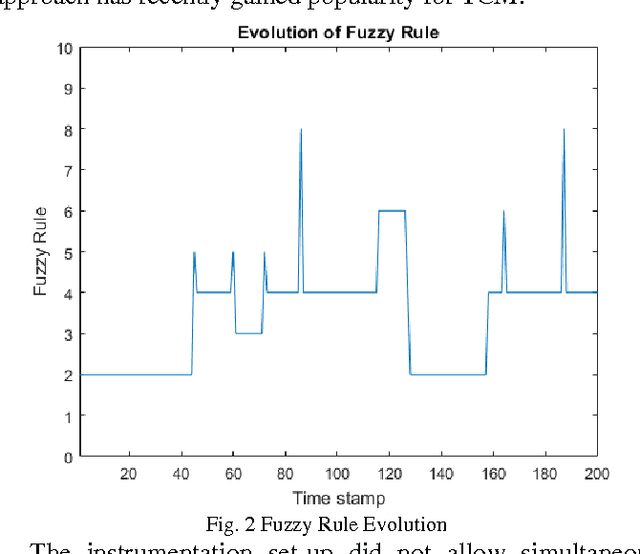Eric Dimla
Online Tool Condition Monitoring Based on Parsimonious Ensemble+
Nov 06, 2017



Abstract:Accurate diagnosis of tool wear in metal turning process remains an open challenge for both scientists and industrial practitioners because of inhomogeneities in workpiece material, nonstationary machining settings to suit production requirements, and nonlinear relations between measured variables and tool wear. Common methodologies for tool condition monitoring still rely on batch approaches which cannot cope with a fast sampling rate of metal cutting process. Furthermore they require a retraining process to be completed from scratch when dealing with a new set of machining parameters. This paper presents an online tool condition monitoring approach based on Parsimonious Ensemble+, pENsemble+. The unique feature of pENsemble+ lies in its highly flexible principle where both ensemble structure and base-classifier structure can automatically grow and shrink on the fly based on the characteristics of data streams. Moreover, the online feature selection scenario is integrated to actively sample relevant input attributes. The paper presents advancement of a newly developed ensemble learning algorithm, pENsemble+, where online active learning scenario is incorporated to reduce operator labelling effort. The ensemble merging scenario is proposed which allows reduction of ensemble complexity while retaining its diversity. Experimental studies utilising real-world manufacturing data streams and comparisons with well known algorithms were carried out. Furthermore, the efficacy of pENsemble was examined using benchmark concept drift data streams. It has been found that pENsemble+ incurs low structural complexity and results in a significant reduction of operator labelling effort.
Metacognitive Learning Approach for Online Tool Condition Monitoring
May 06, 2017



Abstract:As manufacturing processes become increasingly automated, so should tool condition monitoring (TCM) as it is impractical to have human workers monitor the state of the tools continuously. Tool condition is crucial to ensure the good quality of products: Worn tools affect not only the surface quality but also the dimensional accuracy, which means higher reject rate of the products. Therefore, there is an urgent need to identify tool failures before it occurs on the fly. While various versions of intelligent tool condition monitoring have been proposed, most of them suffer from a cognitive nature of traditional machine learning algorithms. They focus on the how to learn process without paying attention to other two crucial issues: what to learn, and when to learn. The what to learn and the when to learn provide self regulating mechanisms to select the training samples and to determine time instants to train a model. A novel tool condition monitoring approach based on a psychologically plausible concept, namely the metacognitive scaffolding theory, is proposed and built upon a recently published algorithm, recurrent classifier (rClass). The learning process consists of three phases: what to learn, how to learn, when to learn and makes use of a generalized recurrent network structure as a cognitive component. Experimental studies with real-world manufacturing data streams were conducted where rClass demonstrated the highest accuracy while retaining the lowest complexity over its counterparts.
 Add to Chrome
Add to Chrome Add to Firefox
Add to Firefox Add to Edge
Add to Edge